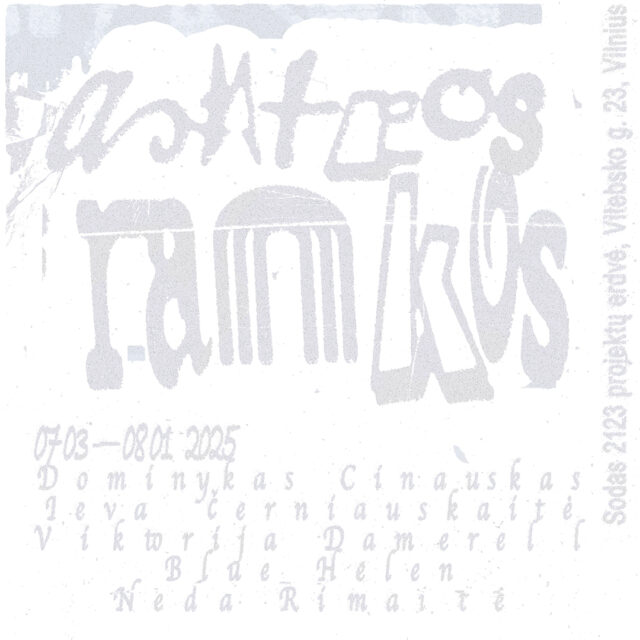The term “hauntology” is most often associated with Jacques Derrida’s text on “spectres” which is derived from the thought of Karl Marx and Friedrich Engels who stated – “A spectre is haunting Europe — the spectre of communism.” Fast forward from Marx and Engels in 1848, Derrida in 1993, and Mark Fisher in 2014, spectres and other ghostly creatures are ever so present in 2021. They exist through simulations, repetitions, eerie nostalgia, but also a feeling of perpetual immortality. Spectres, whose existence is everlasting, have a unique ability to appear and disappear on their own terms. Spectres exist without ever being fully present, and this text argues that the lack of presence is the ultimate condition of the 21st century.
It’s a cold night in the Danish royal castle of Elsinore when a group of young men encounter a ghost resembling the late King Hamlet. That is when we, the readers, are Sirst introduced to the father of the Prince of Denmark. From the conversation between the ghostly father and the son, we learn that the King was poisoned by his brother Claudius who has proclaimed himself as the new monarch. The ghost of the old King howls – “Swear! Swear! Swear!” and Prince Hamlet is left with the weight of an obligation to avenge his father.
Later, in 1848, Karl Marx and Friedrich Engels are lying in their beds, unable to fall asleep. They are contemplating the sentence that will commence the pamphlet, which will later become the most crucial and recognised political document. Suddenly, half asleep on different sides of Europe, both Marx and Engels jump up, screaming – Spectre!. “A spectre is haunting Europe—the spectre of communism.”
In his text Spectres of Marx: The State of the Debt, the Work of Mounting and the New International, Jacques Derrida reminds us that “spectre”—or the creature of a spectre—is related to a revenant, which is a present participle form of a French verb revenir, meaning to return. Therefore, the spectre is a creature that returns; the spectre is in a constant condition of appearing, disappearing, and reappearing. This arrangement is the imperative element of spectre’s nature.
To haunt, to be haunted. The action of haunting is connected to an event of a visitation. To be haunted is to be followed, stalked, looked at. The sentiment of being haunted is connected to the uncertainty of one’s own privacy. The spectre exists long before it is seen – its visitation and its visibility happen at spectre’s terms only. Appearing, disappearing, reappearing.
In Spectres of Marx, Derrida continuously repeats: The time is out of joint. He, of course, borrows this lament from The Tragedy of Hamlet, Prince of Denmark, William Shakespeare’s play from the early 1600s. Hamlet pronounces, “The time is out of joint” after he promises to avenge his father. This visitation disturbs Hamlet’s perception of the proportionality and linearity of time.
Perhaps the disturbance of this temporal consciousness is a condition of the generation who are trying to withstand the years leading up to 2021 against all odds. I often Sind myself feeling astonished by the fast-shifting puffs of infographics, logos, images of celebrities, repetitive trademarks – almost resembling Donkey in Shrek 2, driving through the Kingdom of Far Away with “Funkytown” playing in the background. My fellow Generation Y-ers would instantly recognise the golden arches of McDonald’s, the swirly Coca-Cola logo, the Universal Pictures opening fanfares. They haunt me in my dreams – the familiar taste of a cheeseburger, Adam Sandler teaching me life lessons, the Jeopardy “Think!” theme music.
What creates an even larger dissonance is the everlasting sovereignty of social media networks. The familiar gestures of swiping up and down, the predictability of the content, the constant descend into the lives of others conceives a foundation for a complete alienation from any sort of “reality”. The present time becomes haunted by the others – whether they are targeted advertisements, ex’s creeping Instagram stories, or your old classmate that you haven’t seen in 20 years. These creatures are different from the spectres who visited Marx & Engels, Derrida, or even Mark Fisher, as they are more likely to resemble joy and life-sucking dementors rather than translucent phantoms. Appearing, disappearing, reappearing.
In 1981 Jean Baudrillard writes one of his most important works, Simulacra and Simulation. He highlights the process of the progression of an image:
- Image is the reSlection of a profound reality;
- it masks and denatures a profound reality;
- it masks the absence of a profound reality;
- it has no relation to any reality whatsoever; it is its own pure
Essentially, an image that has become its own pure simulacrum masks the absence with references to the presence. The sublimation of reality with simulation becomes a Slag that Western capitalistic society carries with pride. Baudrillard mentions that Disneyworld’s EPCOT park has replaced real Italian plazas and French corner cafes, soap operas sublimate romance, porn videos scrutinise sexual relations. What remains when everything we know is submerged under layers of references?
In her text On Photography Susan Sontag wrote: “To possess the world in the form of images is, precisely, to reexperience the unreality and remoteness of the real.” If we think of the content posted by the following and friend accounts as somewhat carefully curated data, the possession of this data does magnify the remoteness of the real. Yours truly can often get lost in the wonderful lives of others – perhaps, more successful, more beautiful, more exciting, more beloved. Recognizing the remoteness of the real becomes perplexing – the more an image, or information becomes remote, the less relation it has to reality. The image becomes its own pure simulacrum.
The text is written as a complement to Kim? Contemporary Art Centre group exhibition, “Cold Time Out of Joint” (Santa France, Edgars Gluhovs, Ainārs Kamoliņš (and Ting-an Lin), Estere Kajema, Nour Mobarak, Elizaveta Shneyderman, Jack Smith) {1.6.2021 – 4.7.2021}






























